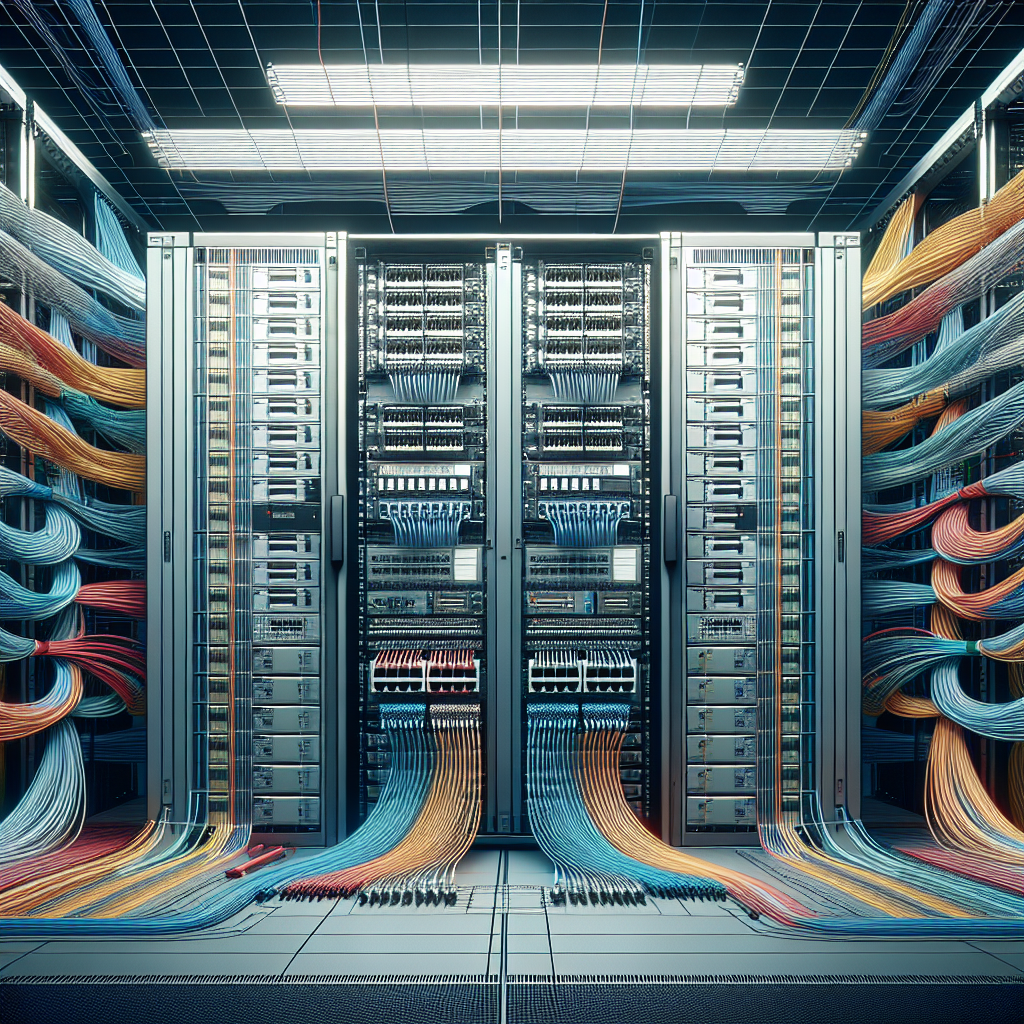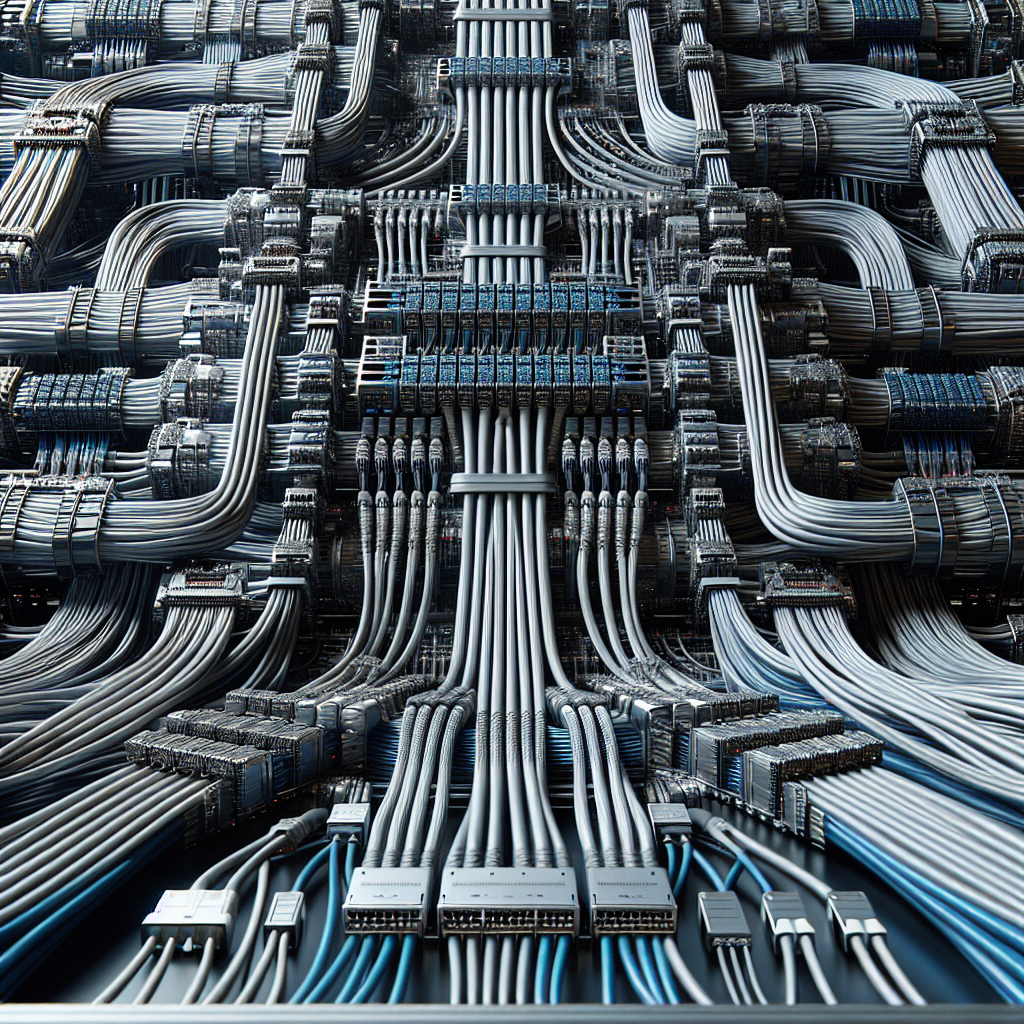Grasping the essentials of data wiring is pivotal for any business or residence looking to establish a reliable and efficient network. Data wiring, also referred to as structured cabling, is the backbone of a robust telecommunications infrastructure. It involves deploying a series of cables and associated hardware, which together create a comprehensive telecommunications platform.
There are two primary standards for data wiring, commonly known as A and B. Each standard outlines a specific configuration for the arrangement of wires within the cable and the corresponding pins at the connectors. Choosing between these standards depends on the existing setup and the specific requirements of the networking equipment used within the building.
Dedicated professionals at Rapid Voice Data Solutions understand the intricacies of both wiring standards. We are committed to guiding you through the complexity of selecting the appropriate wiring scheme for your needs, ensuring that your data transmission is both seamless and secure.
Whether setting up a new network or upgrading an existing one, the choice between data wiring A or B can significantly impact your system’s performance. Visit our website to learn more and get started today! Click here.
Data Wiring A or B: Decoding the Standards
When considering data wiring A or B, it’s essential to understand what each standard represents. The two standards, known as T568A and T568B, are methods of pinning out Ethernet cables and are part of the TIA/EIA-568-B wiring standards set by the Telecommunications Industry Association and the Electronic Industries Alliance.
The T568A and T568B standards differ in the way that the colored wires inside the Ethernet cable are arranged. While both configurations wire the pins “straight through,” meaning that pins 1 to 8 on one end are connected to pins 1 to 8 on the other end, the order of the wire colors varies. This variance can determine compatibility with certain types of equipment and networking configurations.
In T568A, the green and orange pairs are switched when compared to the T568B configuration, which can have an impact on the type of crosstalk that occurs between the wires. Crosstalk is a form of signal interference that can degrade network performance, and selecting the correct standard can help minimize this effect.
It’s also important to note that although both standards are widely accepted and used, T568B is the most commonly used standard in the United States, particularly in commercial installations. Residential installations, however, may utilize either standard depending on the region and the installer’s preference. Understanding the specifics of each standard is crucial for ensuring that the network will operate effectively with all connected devices.
The Impact of Choosing A or B on Performance
The choice between data wiring A or B configurations can have a subtle but significant impact on the overall performance of your network. While both T568A and T568B wiring schemes enable networks to operate efficiently, the decision may affect future scalability and compatibility with other networking hardware.
One of the primary considerations is the type of network hardware being used. Some older hardware may only support one wiring standard, making it essential to choose the correct one to maintain compatibility. Moreover, if your network consists of a mix of both standards, it could lead to complications when troubleshooting or making modifications to the system.
Another factor to consider is the industry standard in your region or business sector. For example, federal government installations might require a specific standard to be followed. Not adhering to such standards could result in non-compliance with industry regulations, which could have long-term implications for your business operations.
When it comes to performance, it’s important to understand that neither standard inherently offers a better signal quality than the other. However, consistency is key. Maintaining the same standard throughout your network ensures that you avoid potential issues such as increased crosstalk or signal loss that can arise from mismatched terminations. Ensuring uniformity in your data-wiring practice can lead to a more stable and reliable network, which is crucial for any business relying heavily on data communications.
Compatibility Considerations in Data Wiring
When planning your network’s infrastructure, understanding compatibility considerations in data wiring A or B is crucial. The compatibility of your data wiring affects not just the current performance but also the future expansion and integration of new devices and technologies.
Compatibility extends beyond the A and B wiring schemes. It encompasses the type of cables used (such as Cat5e, Cat6, or Cat6a), the quality of the components, and even the layout of your network. For instance, mixing different categories of Ethernet cables can lead to suboptimal network speeds and increased latency, because the system has to operate at the level of the lowest-performing cable.
Moreover, the choice between the A or B wiring standard can influence how easily new components can be added to the network. Most modern devices support both standards, but certain proprietary systems or specialized equipment may require a particular configuration. It’s essential to conduct thorough research or consult with a professional to understand the specifications and compatibility requirements of all network components.
Another compatibility factor is the patch panel and keystone jacks used in your setup. Ensuring that these components match the chosen wiring standard is vital for preventing connectivity issues. It’s also important to consider the potential need for Power over Ethernet (PoE) capabilities, as certain wiring configurations might be more conducive to safely and efficiently providing power to devices over the network.
In summary, taking into account all compatibility considerations will help ensure a robust and adaptable network infrastructure. This foresight can prevent costly reworks and downtime, thus safeguarding the productivity and efficiency of your operations.
Installation Best Practices for Data Wiring
Adhering to installation best practices for data wiring is essential to ensure that your network operates efficiently, and securely, and is ready for future upgrades. Proper installation minimizes the risk of downtime, data corruption, and speed limitations. One key practice is following the manufacturer’s guidelines for cable bending radius to prevent damage that can impede signal quality. Another is to avoid running data cables parallel to power lines, which can cause electromagnetic interference and degrade network performance.
Labeling is another best practice that should not be overlooked. Clearly labeling both ends of each cable makes maintenance and troubleshooting significantly easier. This organization extends to using cable managers and conduits, which protect cables from physical damage and help maintain a clean and professional appearance.
Testing each cable run with a certified cable tester before putting them into service ensures that the installation meets industry standards and that the network will perform as expected. It’s also important to adhere to local building codes and standards, which dictate how and where cables can be installed, especially concerning fire safety.
Finally, grounding and bonding should be taken seriously. Proper grounding of racks and cabinets protects against electrical surges and reduces noise that can interfere with data transmission. A well-grounded system is not only a safety imperative but also a performance one.
By following these installation best practices, you can lay a solid foundation for your network’s infrastructure, one that promotes longevity, reliability, and scalability. Whether you’re doing the installation yourself or hiring a contractor, these practices are non-negotiable for a high-quality data-wiring project.
Making the Right Choice: Data Wiring A vs B
Visit our website to learn more and get started today! Click here.
Making the right choice between Data Wiring A and B standards is critical for ensuring your network’s compatibility and performance. Both T568A and T568B are methods used to terminate the twisted pair cable onto the connector interface. While there’s no performance difference between them, the choice typically depends on the existing wiring standard of the current infrastructure and compatibility with other equipment.
Regionally, T568B is more prevalent in the United States, making it a common choice for American businesses and residences. However, if your network will be extending or integrating with existing telecommunications cabling, it’s crucial to maintain consistency with the established standard to avoid potential connectivity issues.
Another consideration is the type of network devices being used. Certain manufacturers may recommend one standard over the other for optimal performance with their equipment. Consulting with device documentation or a professional installer can help clarify which standard is advisable.
Ultimately, the choice between Data Wiring A or B should be informed by these considerations, ensuring seamless integration and network operation. When in doubt, or if you’re setting up a new network without legacy constraints, either standard can be selected, as long as it is applied consistently throughout the installation.
Remember, the key to any successful data-wiring project is consistency and adherence to industry practices. Our team is equipped with the expertise to guide you in making this decision and executing your project with precision. Visit our website to learn more and get started today! Click here.





